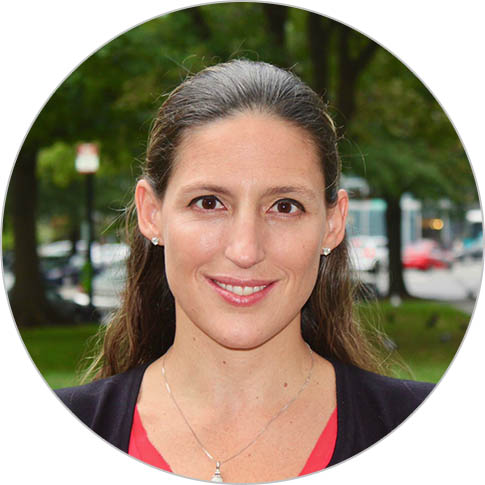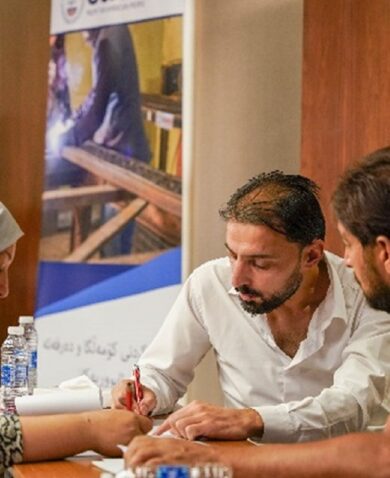
Do Extractives Companies Need Another Environmental, Social, and Governance Performance Standard?
November 17, 2015 | 3 Minute ReadEnvironmental, social, and governance standards have proliferated since the 80s, but according to Giuliana Canessa Walker, the Equitable Origin standard is different from the rest.
Interest in how extractives companies deal with the environmental, social, and governance aspects of their work is increasing among investors, financial institutions, affected communities, consumers, and NGOs. To meet stakeholders’ expectations and avoid additional regulations, many extractives companies are committing to voluntary environmental, social, and governance (ESG) standards — essentially principles, guidelines, and certifications systems that investors, consumers, and others can use while evaluating companies’ operations. Adopting ESGs helps extractives companies to better manage and mitigate environmental and social risks, demonstrate their organizational performance, and showcase continuous improvement in areas that stakeholders increasingly care about.
Proliferation of Environmental, Social, and Governance Standards
Since the introduction of eco-labels in the late 1980s, more than 500 ESG standards have been created in various sectors of the global economy, including several in the extractives sector. Some of the most widely recognized and adopted ESG principles and standards in extractives today are the IFC Performance Standards, the World Bank Environmental Health and Safety Guidelines, UN Guiding principles on Human Rights, the Equator Principles, Extractive Industries Transparency Initiative, and International Council on Mining and Metals Principles. When I first heard of Equitable Origin’s EO100 performance standard, I was skeptical. Do extractives companies really need another ESG standard? How is this standard different from the several that already exist? How do you actually put the standard into practice?
Why the EO100 Standard Is Different
The EO100 is the first oil and gas sector-specific ESG performance standard focused on clear, expected outcomes and report-outs on non-financial risk issues. From my perspective, there are four main ways in which the EO100 standard is unlike other ESGs in the extractives sector:
- EO involved an unusually broad coalition of oil and gas companies and service providers, governments, indigenous communities, academics, and environmental and social NGOs to create the EO100. I was impressed to learn about the level of engagement EO had with indigenous communities, especially in Latin America. This confirms for me the value of the standard not only for oil and gas companies, but also for communities.
- EO developed the standard as a certification mechanism with multiple layers of performance targets, but it can also serve as a framework to continuously improve ESG practices and secure the social license to operate.
- EO is working with stakeholders to expand its system to renewable energy development projects by developing an addendum to the EO100 specific to wind and solar projects. With regional partners, EO has identified wind development in Oaxaca, Mexico, as potential territory for pilot projects to test out the wind energy addenda to the standard.
- The design of EO100 accounts for ESG risks in an energy company’s management lifecycle, which has not been done before. EO wants to become the ESG benchmark for the energy sector.
How to Use EO100
The EO100 standard is based on six principles:
- Corporate governance
- Human rights and social impact
- Fair labor and working conditions
- Indigenous peoples’ rights
- Climate change and biodiversity
- Project life cycle management
Each principles is broken into discrete provisions to be met. To start using the standard, a company needs to conduct a gap analysis to determine whether its project satisfies the provisions and meets, exceeds, or leads performance targets. After identifying strengths and weaknesses in each of the provisions, the company, usually assisted by a consultant, prepares an improvement action plan which determines the difficulty of each tasks and clear next steps. In this way, the company will be challenged to achieve the highest ESG performance in every standard review.
Early Success in Colombia
EO’s first certified site, a pair of oil fields in Colombia owned by Pacific Exploration and Production, received its certification in August of 2014. For more than a year leading up to the certification, Pacific E&P worked with EO to make policy and operational changes that brought the site’s performance up to the benchmarks of the EO100 standard. The EO100 continues driving social and environmental improvement at the site, which is one of the largest in Colombia and produces 250,000 barrels of oil per day, or about 25 percent of total national output.
When drafting the EO100, the organization referred to many of the voluntary principles, guidelines, and certifications systems mentioned above. There is not a perfect standard out there, but I am certain of the strengths and benefits of the EO100, not only as a valuable recognition of a company’s ESG’s performance, but also as a practical tool for continuous improvement and creating shared value.
Chemonics became an EO Qualified Implementation Consultant (QIC) in August 2015. QICs provide energy developers seeking EO site certification support with strategy and planning, implementation, and setting and meeting objectives related to EO certification. In doing so, QICs help streamline the site certification process.
























